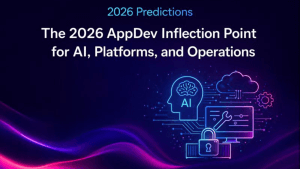SIGNAL 2025 delivered exactly what you’d hope for in an AI-era conference: clear direction, developer focus, product maturity, and a few dragons for good measure. Hosted in San Francisco, the two-day event managed to balance deep product detail with a sense of community and momentum without AI-washing the entire conference. As someone who still hasn’t mastered adapting to time zones overnight, I appreciated Twilio’s thoughtful event cadence.
A personal shoutout to Pat Devlin, my ever-reliable AR contact who made sure I was able to attend the event and consistently kept me in the loop – thanks, Pat!
And yes, the dragon mascot that closed out the Day 2 keynote by kicking off the scavenger hunt was a hit. It perfectly captured the vibe of SIGNAL this year: focused but fun, technical but accessible, and full of surprises that actually mattered.
Twilio Signals It’s Ready for What’s Next
Across every keynote and session, Twilio showed a maturity that goes well beyond APIs. Its platform is now positioned as the infrastructure layer for contextual, AI-enabled customer engagement. The Day 1 keynote laid out this transformation with clarity, emphasizing that the only AI that really matters is contextual AI.
Twilio’s north star is no longer feature parity. It’s platform cohesion. The company is merging identity, consented data, and communication into a unified experience that developers can actually build on. The Executive Q&A offered a candid look at the challenges and commitment behind that transformation.
As theCUBE Research has noted, over 90 percent of organizations are investing in AI, but only 20 percent of models ever reach production. Twilio is trying to close that gap by focusing on tools that don’t just enable AI, but operationalize it.
Developers First, Builders Everywhere
Twilio made a strong case for its role as the go-to partner for builders—regardless of whether they’re writing code. The PMM Briefing helped crystallize that narrative. Multi channel communication has to be the default. What sets Twilio apart is its ability to abstract away complexity without sacrificing flexibility.
That message was echoed in the Day 2 keynote, where Twilio announced support for rich messaging via RCS, deeper branding tools, and a commitment to observability that goes beyond backend infrastructure. The demo that upgraded SMS to RCS in under 10 minutes—with fallback and no major code changes—was a highlight.
Developers today want building blocks, not blank canvases. That’s why Twilio’s investments in things like the Content Template Builder and Conversation Relay matter. According to McKinsey, companies that deploy AI at scale see 30 to 50 percent reductions in customer service costs and up to 20 percent increases in top-line growth. Twilio is clearly aiming to be the infrastructure that powers that kind of outcome.
AI That Works, Because the Data Does
Throughout SIGNAL, the most compelling stories were the ones that paired AI capability with data readiness. In the AI in Production sessions, Zenify shared a framework for starting small, evaluating available data, and building fast. Treatwell showed how AI voice agents are now handling 75 percent of inbound calls.
Dan McGaw brought the point home in his lightning talk: most companies only give AI systems about 5 percent of their customer data. No wonder 69 percent of AI users don’t trust the outputs. Twilio’s Segment CDP, with its new real-time orchestration and branching logic, is designed to fix that. It turns data from a silo into an engine.
As SiliconANGLE has observed, the next wave of AI success will not come from bigger models but better data. Twilio seems to agree, embedding data quality and profile unification into everything from messaging journeys to fraud detection.
Builders on the Ground Are Already Delivering Value
Perhaps my favorite part of SIGNAL was the Builder Conversations. Zillow and Nextdoor showed how Twilio is helping them rewire real estate and community platforms for an AI-native future. From AI-generated engagement flows to personalized messaging orchestration, it’s clear these aren’t side projects. They’re core to the future of digital operations.
A recent report shows that by 2026, 75 percent of customer-facing applications will embed AI-driven agents or orchestration layers. Twilio isn’t waiting for that trend to catch up, it’s enabling builders to lead it.
Final Take: Twilio Is More Than Ready
Twilio is not chasing hype. It’s focused on usability, composability, and trust. This year’s SIGNAL showed a platform that has moved from delivering digital messages to orchestrating real-time, intelligent engagement at scale.
With clear investments in developer experience, strategic partnerships like Microsoft Azure, and a vision built on the pillars of trust and context, Twilio is writing the playbook for how communications platforms should evolve in the AI era.
And yes, if the dragon sticks around, I’ll be back next year too.


